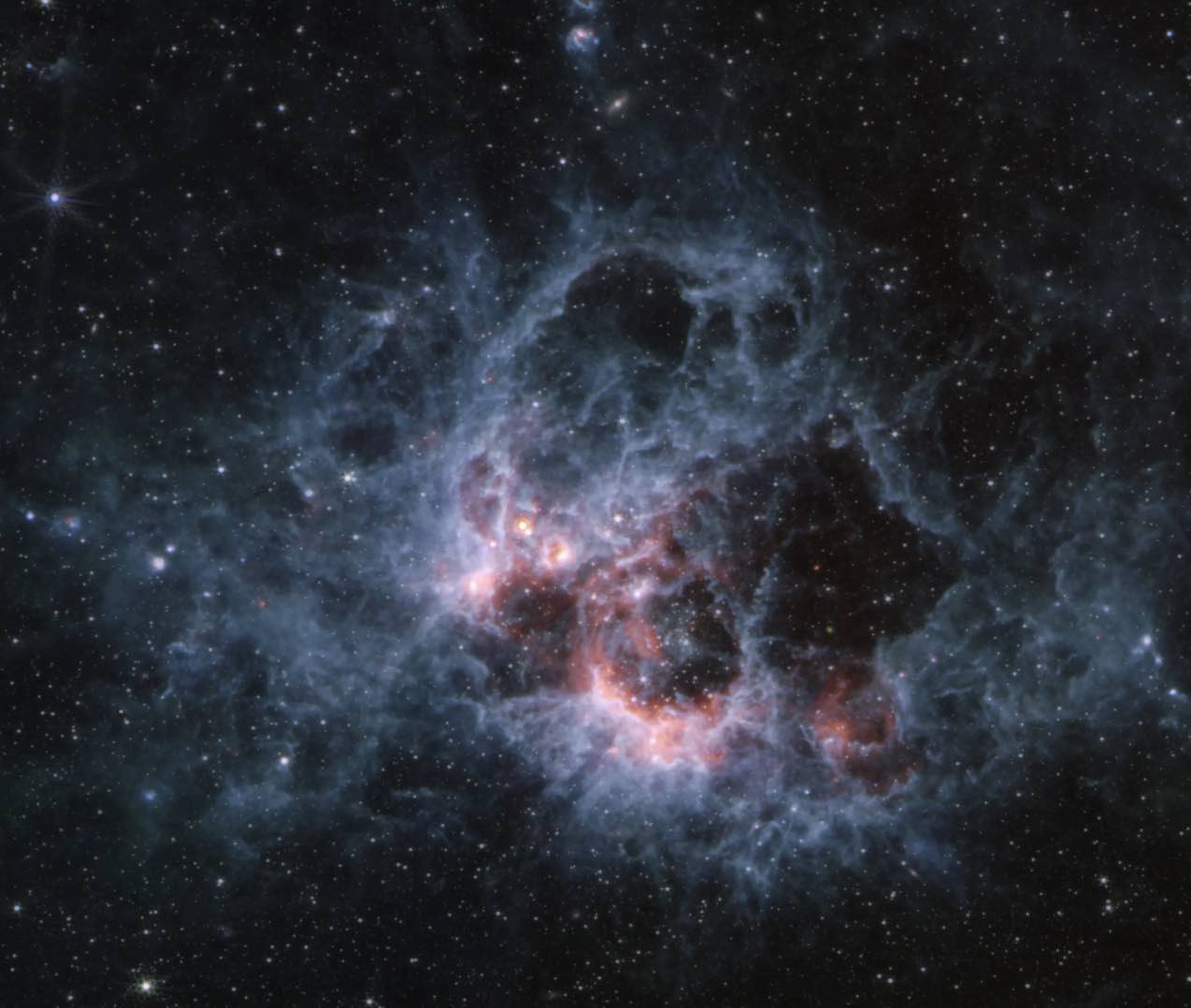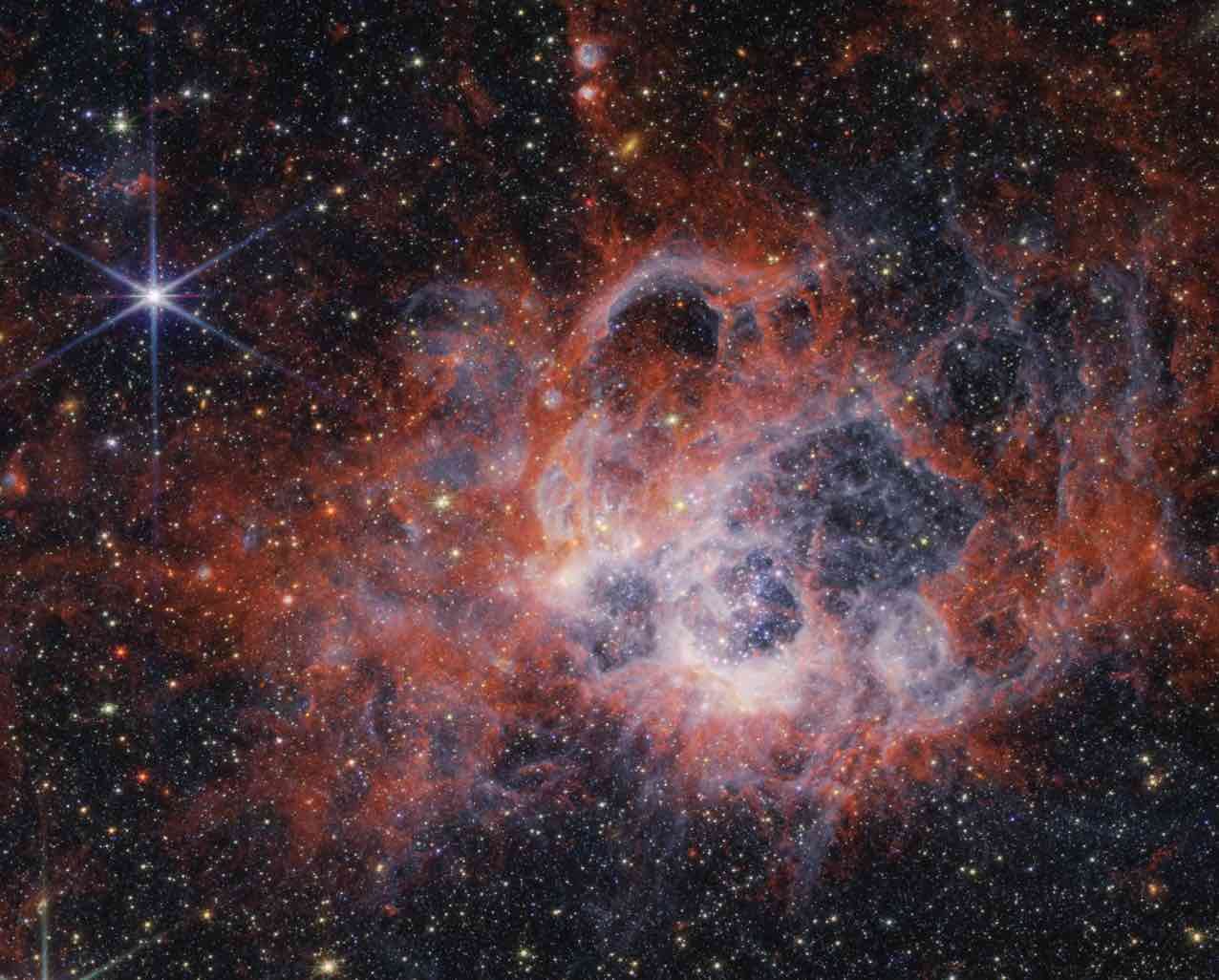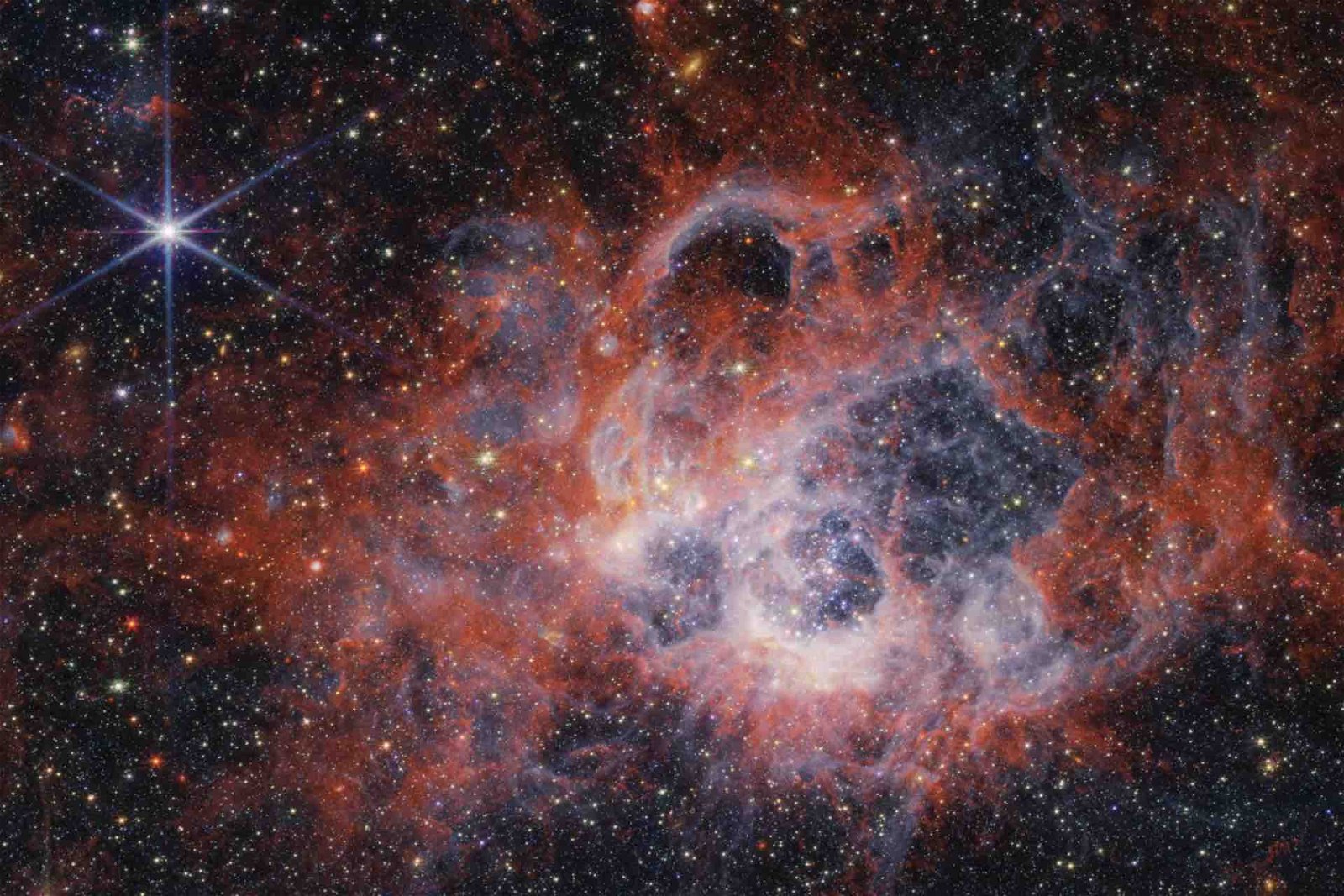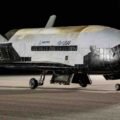NASA’s James Webb Space Telescope is offering astronomers a new perspective on a chaotic star-forming region in the Triangulum galaxy in a pair of stunning new images.
Located 2.73 million light-years away, the NGC 604 region was observed using Webb’s Near-Infrared Camera (NIRCam) and Mid-Infrared Instrument (MIRI), offering imagery that shows filaments of gas strewn throughout the region amid bubbles of cosmic material that offer astronomers a view of how stars form in ways never before seen.
By studying the tumultuous regions of space where stars form, astronomers have gleaned several key insights about our universe. Yet despite the level of attention these areas receive, much about them remains mysterious and ripe for further investigation.


Fortunately, the James Webb Space Telescope is well-equipped for probing these areas of our universe. The sensitivity of Webb’s NIRCam relies on its 18-section mirrors to obtain infrared imagery of cosmic regions that reveal phenomena that remain undetected at visible wavelengths. Similarly, Webb’s MIRI instrument possesses a camera, as well as a spectrograph that allows it to capture light in the mid-infrared region at wavelengths that are longer than what our eyes, or conventional optical systems, can perceive.
Through Webb’s infrared eye, NGC 604 has revealed envelopes of dusty gas that astronomers believe to be among the hottest and most massive stars of their kind, all of which are veritable infants in their stellar nursery. Comprised mostly of what are known as B-type and O-type stars, some of these are more than 100 times the mass of Earth’s host star.


One reason astronomers are particularly intrigued by NGC 604 is because it remains rare to see stars of this type all together in such concentration, a phenomenon that has never been observed anywhere within the Milky Way.
The new Webb imagery showcases a nebula composed of filamentary clouds surrounding a large bubble encasing a region of stars. Smaller cavernous bubbles also exist closer to the top portion of the nebula, all of which are surrounded by thousands of stars.
However, the most prominent formations in the new imagery are the bright red “tendrils” emerging from large bubble-like areas within the nebula, which have been hollowed out over time by the strength of stellar winds from the hot young stars within. Webb’s sensitive imaging systems also reveal the glowing gas that surrounds them, where ultraviolet radiation from the nearby stars has ionized the hydrogen gas within.
Never before seen in the images are a pair of bright young stars whose stellar winds have created holes in the dust located above the nebula, which in past imagery collected by NASA’s Hubble Space Telescope only resembled separate diffuse glowing areas. Webb’s infrared imagery clearly shows each of the stars in their hollowed-out cavities, which remain connected by a region of red gas in the new images, which conveys the presence of molecular hydrogen.
Elsewhere, orange strips of cosmic material can be seen in the Webb images that appear to reveal the presence of what are called polycyclic aromatic hydrocarbons, a variety of carbon-based molecules that play a crucial role in the formation of stars, as well as planets.
Despite its significance in the formation of celestial bodies, astronomers remain uncertain about the origins of polycyclic aromatic hydrocarbons, although future studies with Webb will likely reveal additional insights into these compounds.
At close to 3.5 million years old, NGC 604 is probably only beginning to unveil its many mysteries. Through the powerful infrared eye of Webb, they are steadily coming into focus for astronomers.
Micah Hanks is the Editor-in-Chief and Co-Founder of The Debrief. He can be reached by email at micah@thedebrief.org. Follow his work at micahhanks.com and on X: @MicahHanks.

